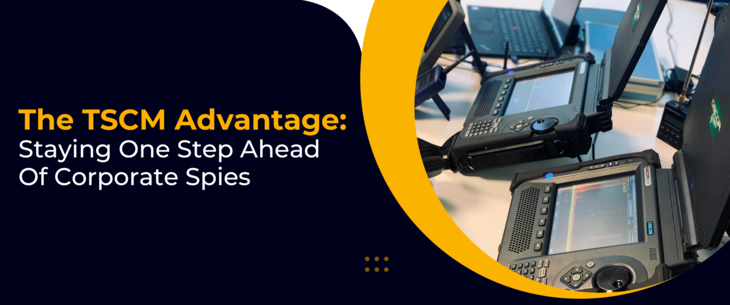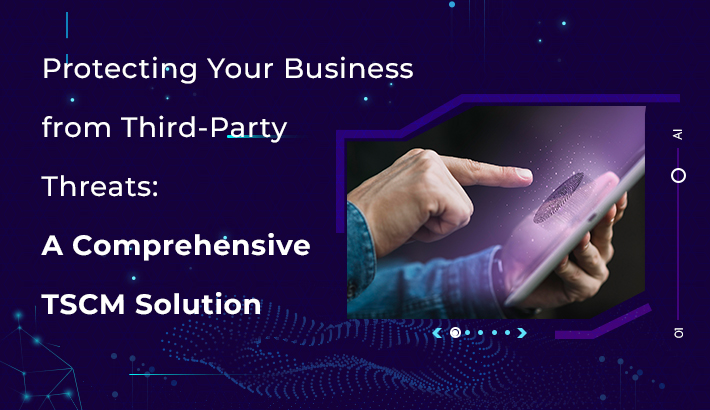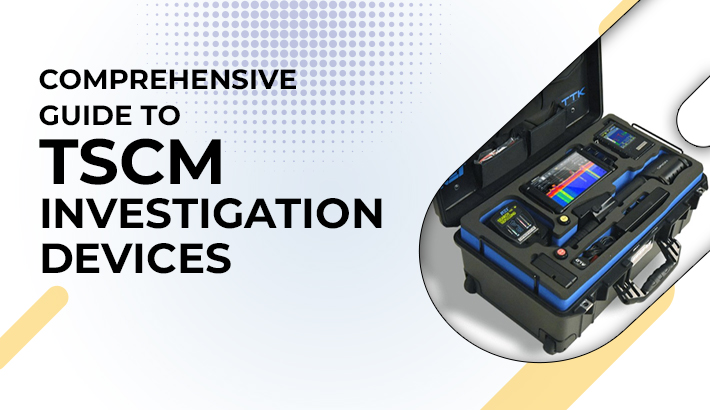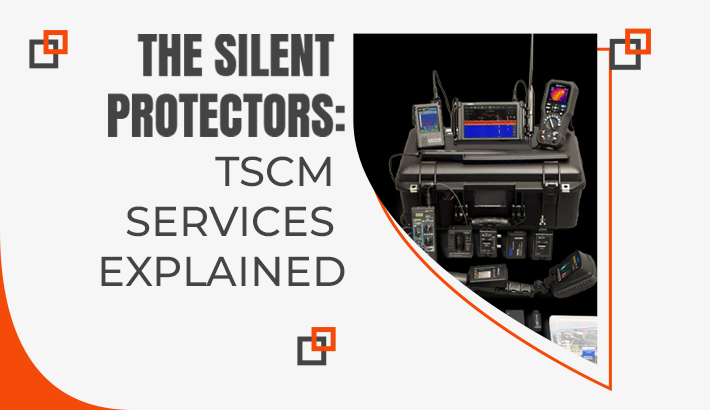In an era where information is power, the importance of safeguarding sensitive data cannot be overstated. Whether you are a business executive, a government official, or a high-profile individual, the threat of surveillance is ever-present. This is where Technical Surveillance Countermeasures (TSCM) come in. TSCM services are designed to detect and neutralize eavesdropping devices, ensuring that your conversations and data remain confidential. However, a critical question arises: when should you schedule TSCM services? Should it be done proactively, as a preventive measure, or reactively, after suspecting a breach? In this comprehensive guide, we will explore both proactive vs. reactive TSCM approaches, helping you determine the best strategy for your unique needs.
Understanding TSCM
Before delving into the proactive versus reactive debate, it’s essential to understand what TSCM entails. TSCM involves a thorough inspection of your premises to detect and mitigate any surveillance devices, such as hidden cameras, microphones, or wiretaps. Professionals use advanced tools and techniques to sweep for these devices, ensuring that your environment is secure.
The Case for Proactive TSCM Services
1. Preventing Information Leaks
One of the most compelling reasons to schedule TSCM services proactively is the prevention of information leaks. In many cases, the damage caused by a security breach can be irreparable. For businesses, leaked information can lead to financial loss, reputational damage, and legal complications. Proactive TSCM sweeps can identify and eliminate surveillance devices before they have a chance to compromise your data.
2. Peace of Mind
Knowing that your environment is secure provides peace of mind. For high-profile individuals and executives, the constant fear of being monitored can be stressful. Regular proactive TSCM sweeps can alleviate this anxiety, allowing you to focus on your work and personal life without the looming threat of surveillance.
3. Maintaining Competitive Advantage
In the business world, competitive advantage is everything. Industrial espionage is a real threat, with competitors potentially using surveillance to gain insight into your strategies and plans. Proactive TSCM services ensure that your confidential business discussions and meetings remain private, protecting your competitive edge.
4. Compliance with Regulations
Certain industries are subject to stringent privacy and security regulations. For example, government contractors, financial institutions, and healthcare providers must adhere to strict guidelines to protect sensitive information. Proactively scheduling TSCM services helps ensure compliance with these regulations, avoiding potential fines and legal issues.
5. Early Detection of Threats
Proactive TSCM sweeps can identify potential threats early on. By regularly inspecting your premises, TSCM professionals can detect new surveillance devices that may have been recently installed. Early detection allows for swift action, preventing any significant breaches from occurring.
The Case for Reactive TSCM Services
1. Cost-Effectiveness
One of the primary arguments for reactive TSCM is cost-effectiveness. Proactive sweeps require regular scheduling, which can be expensive. On the other hand, reactive TSCM services are only employed when there is a suspicion of surveillance. This approach can be more budget-friendly, especially for small businesses or individuals who may not have the resources for frequent sweeps.
2. Targeted Action
Reactive TSCM services are employed when there is a specific reason to believe that surveillance is occurring. This targeted approach can be more efficient, as it focuses on areas of concern. For example, if you notice unusual behavior in your electronic devices or suspect that confidential information has been leaked, a reactive TSCM sweep can address these specific issues.
3. Crisis Management
In some cases, surveillance is only detected after a breach has occurred. Reactive TSCM services can be part of a broader crisis management strategy. By swiftly addressing the breach and identifying the source of surveillance, you can mitigate the damage and implement measures to prevent future incidents.
4. Flexibility
Reactive TSCM allows for greater flexibility in scheduling. Instead of adhering to a regular sweep schedule, you can request TSCM services as needed. This flexibility can be beneficial for businesses or individuals with varying levels of risk exposure.
Balancing Proactive and Reactive Approaches
While there are valid arguments for both proactive and reactive TSCM, the most effective strategy often involves a combination of both approaches. Here’s how you can balance proactive and reactive TSCM services:
1. Risk Assessment
Conduct a thorough risk assessment to understand your level of exposure to surveillance threats. Factors to consider include the nature of your business, the sensitivity of the information you handle, and your profile in the industry or community. This assessment will help determine the frequency and intensity of proactive TSCM sweeps needed.
2. Establish a Baseline
Start with an initial proactive TSCM sweep to establish a security baseline. This initial sweep will identify any existing surveillance devices and vulnerabilities. Once a baseline is established, you can schedule regular sweeps based on your risk assessment.
3. Implement Monitoring and Detection Systems
Incorporate electronic monitoring and detection systems as part of your overall security strategy. These systems can provide real-time alerts if surveillance devices are detected, allowing for a reactive TSCM sweep to be conducted promptly.
4. Train Your Team
Educate your employees or household members about the signs of surveillance and the importance of security protocols. A vigilant team can help identify potential threats early, triggering a reactive TSCM response when necessary.
5. Regular Reviews and Updates
Regularly review and update your TSCM strategy. As technology evolves, new surveillance devices and methods emerge. Staying informed about the latest trends and incorporating them into your TSCM plan will ensure that your security measures remain effective.
Proactive vs. Reactive TSCM Services
To illustrate the benefits and drawbacks of proactive and reactive TSCM approaches, let’s explore a couple of real-life scenarios.
Case Study 1: Proactive TSCM Services for a Financial Institution
A major financial institution implemented a proactive TSCM strategy, scheduling quarterly sweeps of their executive offices and boardrooms. During a routine sweep, TSCM professionals discovered a hidden microphone in the CEO’s office. The device was promptly removed, and an investigation revealed that it had been planted by a competitor seeking insider information. By proactively scheduling TSCM services, the financial institution prevented a significant breach and protected its sensitive data.
Case Study 2: Reactive TSCM Services for a High-Profile Individual
A high-profile individual began to suspect surveillance after noticing unusual behavior in their electronic devices. They contacted a TSCM service provider, who conducted a reactive sweep of their home and office. The sweep uncovered multiple hidden cameras and listening devices. The individual took immediate action to secure their environment and launched an investigation to identify the perpetrators. While the reactive TSCM approach successfully addressed the immediate threat, the individual realized the importance of regular proactive sweeps to prevent future incidents.
Conclusion
When it comes to scheduling TSCM services, there is no one-size-fits-all answer. Both proactive vs. reactive TSCM approaches have their advantages and can be effective in different situations. The key is to understand your specific needs and risks, and to implement a balanced strategy that combines the strengths of both approaches. By doing so, you can ensure that your environment remains secure, your information stays confidential, and you can operate with peace of mind in an increasingly surveillance-prone world.
Spy Detective Agency – the best detective agency in Delhi offers expert TSCM services to ensure your privacy and security. With a team of seasoned professionals and state-of-the-art technology, they provide both proactive vs. reactive TSCM sweeps tailored to your specific needs. Whether you’re looking to prevent potential threats or address existing suspicions, Spy Detective Agency can help you maintain a secure environment, protect sensitive information, and achieve peace of mind. Their comprehensive approach and commitment to confidentiality make them a reliable partner in safeguarding your privacy.







